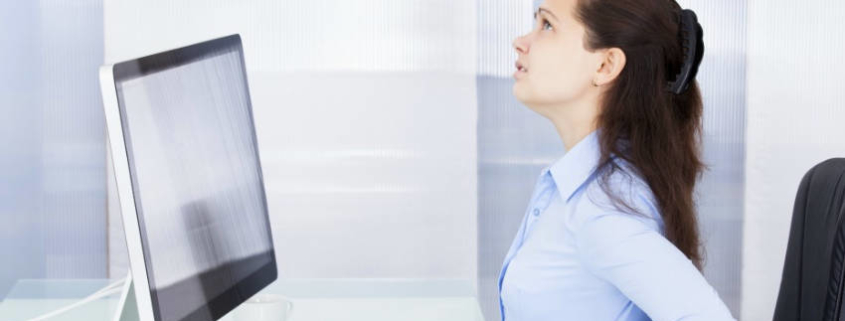Thinking Straight
In today’s fast paced world, poor posture is a common ailment. With these tips, you’ll be standing tall in no time.
The human body is not designed to sit for extended periods of time. Our ancestors spent most of their time on their feet, hunting for food and working to stay alive.
Research suggests that four in five adults will experience back-related pain during their lives. Given the modern human’s chair-bound lifestyle, coupled with increasing poor posture. It’s no wonder back pain is one of the most common causes of missed work, and the second most common for visiting a doctor.
First Aid.‘The keystone to good health is optimal posture,‘says Cape Town-based osteopath Dr Guy Ashburner. ‘Every mammal on the planet intuitively knows this, with the exception of modernised humans. ‘Postural awareness has become dormant in most people, resulting in dysfunctional health, spinal health and a host of other problems, including infertility. Are you sitting up straight yet?
‘Osteopaths, chiropractors and physiotherapists treat the same conditions with different approaches,’ explains Dr Ashburner. These three practices help to re-mediate impairments and promote mobility of the body through examination, diagnosis and intervention, although osteopathic treatment is a form of alternative medicine and specifically focuses on the musculoskeletal system.
“With osteopathy, treatment may include fascial release, massage, joint mobilisation, stretching and cranial osteopathy to facilitate normal mobility of the musculoskeletal system,’ says Dr Ashburner. Before you head to your doctor, though, try these quick exercises for some of the most common posture-related problems.
Problem. Spinal Pain
Sitting slumped in front of a computer for hours every day is not natural. ‘This ultimately creates stiffness in the paraspinal muscles, which run the length of the spine,’ Dr Ashburner says. The result? Reduced mobilityof the spinal joints, leading to increased effort for the neck and lower back. This leads to inflammation, degenerative changes and irritation to the anatomy of the neck and spine. He explains that many people accelerate these problems through doing ill-advised exercises and ballistic movements in CrossFit and boot camp.
Solution. Creating mobility along the length of your spine and not only in the affected area. ‘An osteopath would also seek to create muscle balance throughout the body,‘says Dr Ashburner.
At Home. Ensure your computer is properly elevated to avoid looking down and straining your neck. Your sitting posture is also crucial. ‘Bend forward, then shuffle your bottom backwards as far as possible,‘advises Dr Ashburner. ‘Now sit up.‘This position supports your spine, which allows the muscles in the neck, back and shoulders to relax.‘This applies to your driving posture to.’
Problem. Pins and Needles
‘A posture that involves rolling your shoulders forward or having a forward head posture (FHP) compresses nerves and blood vessels, giving you tingling, weakness or coldness in the arms, hands and fingers,‘explains Dr Ashburner.
Solution. Coupled with full spinal and postural correction by an osteopath, physiotheraist or chiropractor, reducing the tension in the muscles at the front of your neck and chest will help to re-establish an uninhibited nerve and blodd supply to your hands.
At Home. Place your elbows on your desk and push down for seven seconds. Rest and repeat seven times at seven -second intervals. ‘This is called the isometric rule of seven, ‘explains Dr Ashburner. ‘What you are feeling are your lower trapezius and rhomboid muscles. This works to strengthen them.’
Problem. Jaw Aches
Temporomandibular joint (TMJ) dysfunction may be caused by trauma to the head, whiplash, stress, infections, dental and surgical procedures, forward head posture, arthritis and general jaw overuse such as bruxism (teeth-grinding), or frequently chewing gum.
Solution. The main goal is to relieve tension in the jaw muscles, and possibly the neck and upper back. ‘This usually results in a greater range of motion, which helps to relieve jaw pain, headaches and neck pain,’ Dr Ashburner explains.
At Home. Wear a mouth guard to prevent grinding during sleep, avoid chewing gum, and make an effort to sit upright and eliminate FHP.
View a list of common complains that Osteopathy can assist with
Discovery the benefits of Osteopathy
- What is Osteopathy?
- Adult health issues
- Babies and Children
- During and after pregnancy
- Common Complaints
- Testimonials
- Sports Injuries
- Genral Osteopathy FAQs
- The Science & Reasearch



